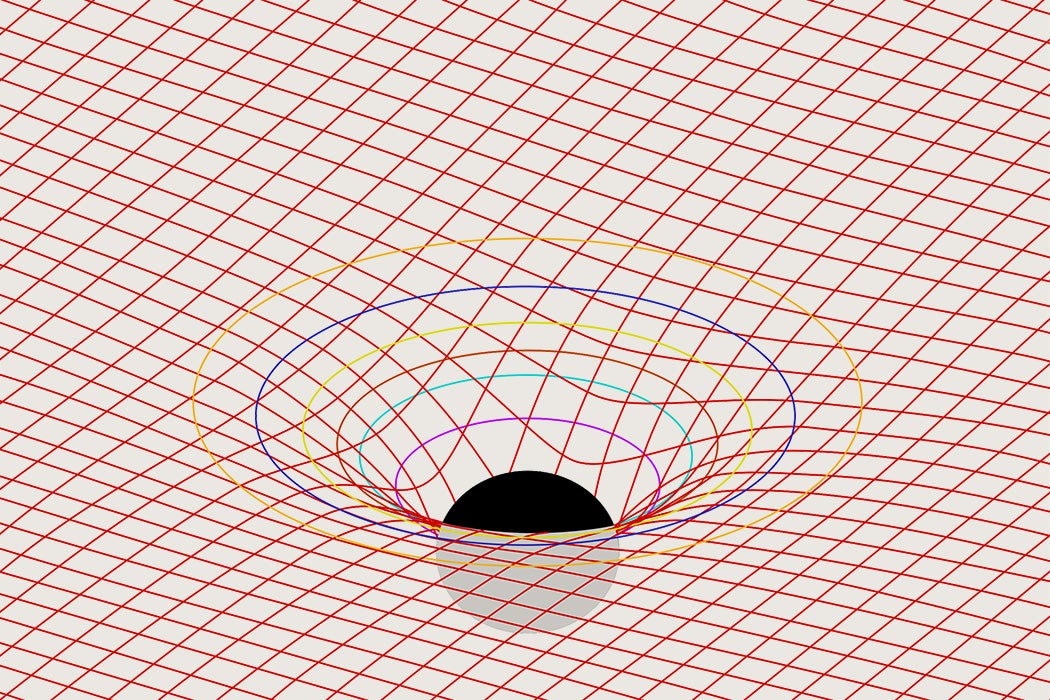The rise of Big Science after World War II was pushed by massive Cold War and Space Race spending. There was, however, one fundamental area of physics that didn’t see federal dollars, at least at first. This was research into gravity and general relativity.
Observations of light bending around the sun in 1919 confirmed Albert Einstein’s “elegant theory of gravitation,” as historians of science David Kaiser and Dean Rickles call this aspect of the general theory of relativity. After that confirmation, though, gravitational physics cooled down. Nuclear and quantum physics became where the action was. (The Nazi’s “crushing displacement of world’s most active centers for gravitational research” didn’t help.)
In the late 1940s, there wasn’t a physics department in the US that required their graduate students to study gravitation/relativity. Yet starting in the mid 1960s, there was what has been called a “renaissance in relativity,” culminating in the work of Stephen Hawking and Roger Penrose on black holes.
As Kaiser and Rickles show, that renaissance was seeded by money from private patrons. Businessmen Robert Ward Babson (1875–1967) and Agnew Hunter Bahnson (1915–1964) funded the burgeoning of gravitational physics when no one else would. But since plutocrats usually want a say in where their money is going, that funding was somewhat eccentric: both men were absolutely obsessed by anti-gravity.
Roger Babson was famous for predicting the 1929 stock market crash. In 1948, with something of a personal grudge against “Gravity: Our Enemy Number One,” he set up the Gravity Research Foundation sixty miles from Boston. The location was chosen because it was supposed to be outside the blast radius of an atomic bomb over Boston.
Babson blamed Gravity (he capitalized it) for the deaths of both his sister and a grandson, both of whom drowned in separate swimming accidents. What Babson most wanted from his gravity researchers was a “partial insulator, reflector, or absorber of gravity”—something, anything, that would stop or dampen the damn stuff.
His interest in slaying what he called “that ‘dragon’ Gravity” led into fantasies about perpetual motion machines and free and limitless electrical power. He also marketed patent medicine “gravity pills,” which he sold for sore legs. He even built the Thomas Edison Bird Museum, with 5,000 specimens. This was named after his inventor friend: Edison had once suggested birds could fly because they had the secret of anti-gravity.
Along with block grants to colleges and universities, Babson’s foundation also contributed actual blocks of stone to thirteen institutions. The foundation’s monument at the Tufts Institute of Cosmology is inscribed “to remind students of the blessings forthcoming when a semi-insulator is discovered in order to harness gravity as a free power and reduce airplane accidents.”
In 1952, the popular science writer Martin Gardner parodied Babson and his foundation in a book on pseudoscience. But Babson’s money was certainly real enough and hard to say no to. The foundation’s essay competition’s first prize was $1,000 in the early 1950s, equal to a graduate student stipend. (Stephen Hawking won six awards from the foundation in the 1960s and 1970s.) Turning away from trying to control gravity to understanding it, the foundation fought its way to respectability. Their first conference on gravitation in 1951 saw twenty-two attendees. By 1958, 280 people were attending.
Agnew Bahnson, meanwhile, was rather younger than Babson but just as fascinated with anti-gravity. A Gravity Research Foundation trustee, Bahnson worked with Bryce DeWitt, the 1953 winner of the foundation’s essay contest, and Cécile Morette DeWitt, a renowned physicist in her own right, to set up the Institute of Field Physics at the University of North Carolina, Chapel Hill (1956). He was a tireless fundraiser, even though the institute’s physicists and administrators made a point of saying that they had “no connection with anti-gravity research.” (Anti-gravity being impossible under general relativity.)
Weekly Newsletter
Bahnson signed off on that official statement but continued his own dabbling in would-be anti-gravity machines. His 1959 novel The Stars Are Too High features “a gravity-defying flying saucer” helping to ease Cold War tensions. (Gravity claimed Bahnson at the age of forty-eight when his private plane crashed.)
The “renaissance of relativity” may be an apt term in more ways than one. Babson and Bahnson were like the patrons of the Renaissance, only instead of funding artists, they funded gravitational physics—and physicists. But were the Medici ever so eccentric?
Support JSTOR Daily! Join our membership program on Patreon today.







